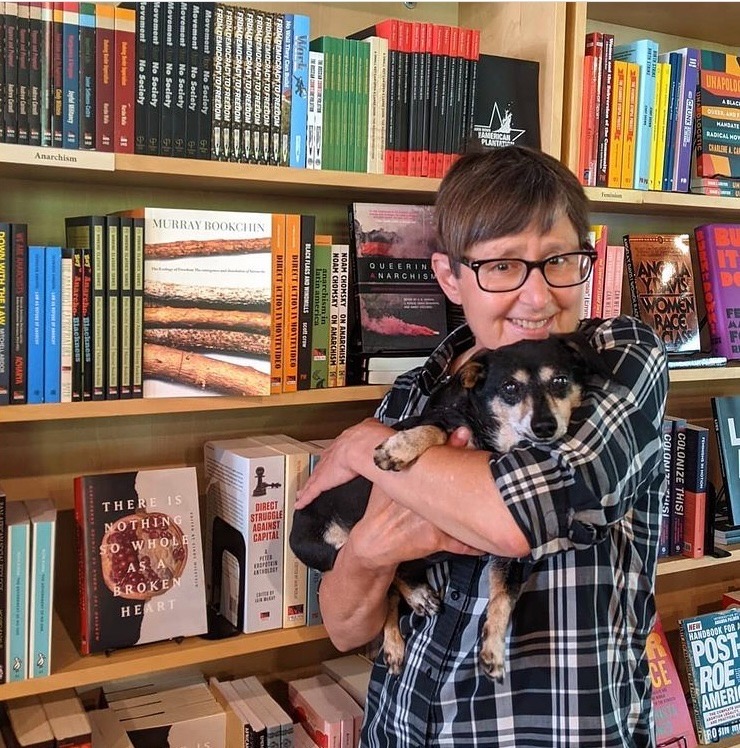
As mutual aid networks created the infrastructure that allowed for the explosion of mass movements, direct action, and the occupation of public spaces during the 2020 protests, people began to ask if we were building a new society or trying to rediscover one that had been scrubbed from our memory. A little of both can be true: Alongside the story of Western imperialism and colonialism is the story of how people resisted their oppression and built community despite the odds.
This impulse to combat domination and create a space of freedom is something that writer and organizer Cindy Milstein uses the word “anarchism” to describe. In this understanding, anarchism is a political and social philosophy that opposes capitalism, the state, and all forms of hierarchical social coercion. Anarchism hopes to instead forge a revolutionary new society founded on three distinct concepts: solidarity, direct action, and mutual aid. The means of achieving this new world are not divorced from the ends, but actually emerge directly out of the methods we use to survive and flourish every day. When our forms of resistance are shaped by liberatory principles, this new society is created in utero, ready to replace the old as it crumbles.
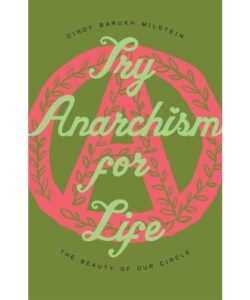
Milstein has authored and edited over a half-dozen books, and their newest project, recently released by the independent publishing collective Strangers in a Tangled Wilderness, is called Try Anarchism for Life: The Beauty of Our Circle. The book emerged from Milstein’s friendly challenge to artists to take the classic “Circle A ” symbol and create an image that reflects how those artists interpret the underlying dream of anarchism. Different creators modeled vastly different (re)imaginings of this best-known symbol of anarchism, and Milstein picked over two dozen Circle As as muses and wrote two dozen short prose pieces. For Milstein, the present and future, the liberation of moments and unshackling of our entire society, happen through interlocking attempts at autonomy and freedom. We free ourselves while freeing others, and that means bringing a transformative vision of a new planet directly into our hearts and daily lives—or what might be called, in Milstein’s words, “everyday anarchism.”
What Milstein built out of this collaboration was a meditation on what it means for all of us to build a life out of anarchism, whether we are anarchists or not, and how we can take those ideas into our own complicated paths. I spoke with Milstein about their new book, how to create a collaborative publishing model, and what it means to live as if the world we dream of is already here, at least in glimpses.
Shane Burley: Why did you want to write a book on anarchism from this perspective?
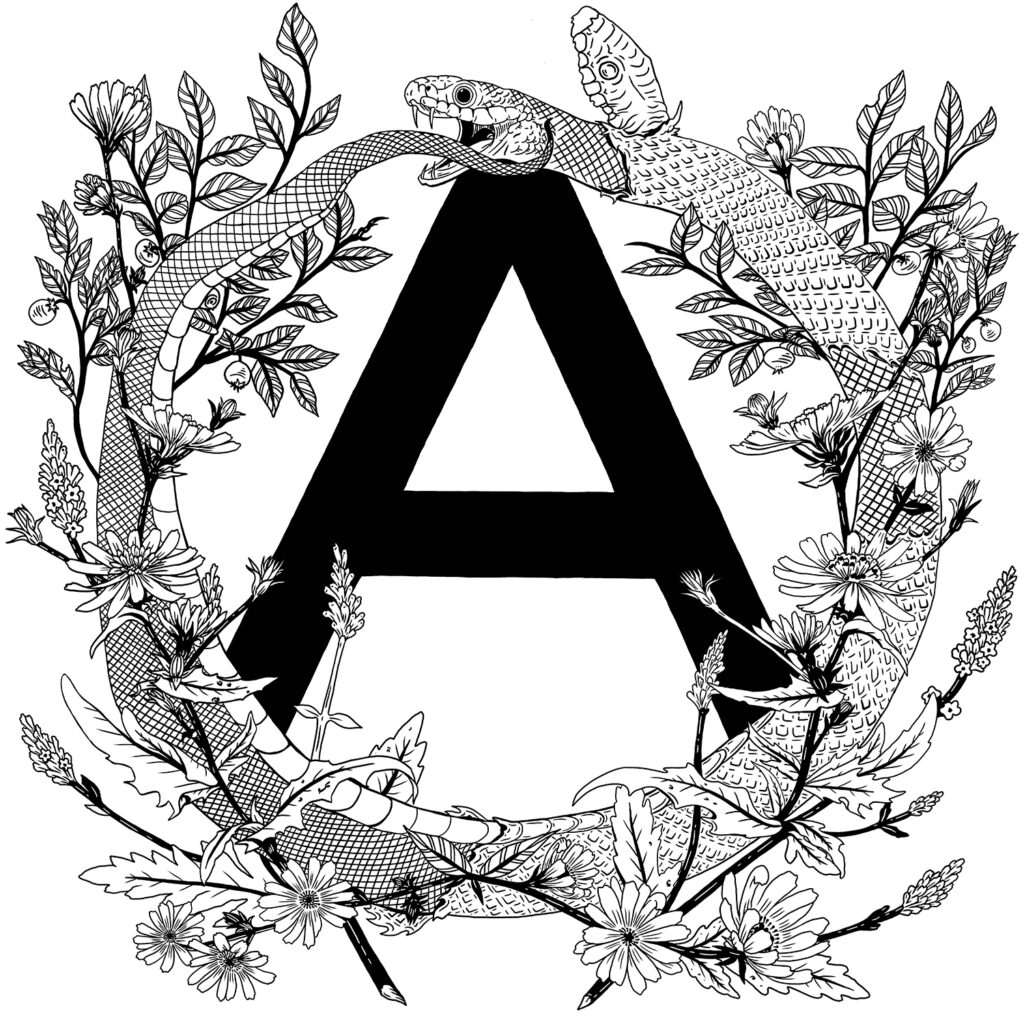
Cindy Milstein: I hope the book speaks to people who have been anarchists for a long time and also welcomes new people into anarchism. As an older anarchist, as every year goes by, I am struck by how hard it is to stay an anarchist for the long haul, allowing us to stay engaged and in relationship to anarchism for the whole of our lives. There are many reasons for this, but especially in times like the present ones, when it is difficult to see any sort of promise or potentiality, I wanted us to remember—myself and readers of Try Anarchism for Life—that we are the carriers of life-giving ways of being in this world. And that anarchism is really about living, in the here and now, lives worth living. Not just for ourselves, but for all of those around us, whether we love them, are friends with them, or don’t know them at all.
I wanted to offer this reminder in a sparse amount of space and yet say a lot, as if I were writing love letters that one could savor, feel, and reread, so as to continue to feel a sense of possibility. There are a few pieces in the book that are wistful or poignant or even sad, so Try Anarchism for Life isn’t suggesting that everything will always be wonderful. The book is prefiguring how to journey through the whole of life, with its joys and sorrows, in beautiful ways, in ways that make us feel whole individually and collectively—something that’s frequently tough to envision under the current conditions of disaster upon disaster.
Anarchism, for sure, is a thoroughgoing critique of everything that oppresses us, dominates us, or forces us into submission and steals away our lives. But we’re socialized by various time periods themselves, and this current one is particularly destructive, so often we speak through all that pains us and simply want to critique, or tear down, everything around us. That’s only half the picture, though. Anarchism is about the creation of what we want and desire through forms of self-organization, always holding out and generously practicing cooperation, love, and care in horizontal, mutualistic, and liberatory ways. It asks us to continually notice and experiment with the things that we’re already doing that signal or qualitatively offer forms of life against the death machines we face daily.
The book emerged out of that question: Why is it so challenging for us to not merely critique but also openly express our visions and dreams, and share them widely with others? As a Jewish anarchist, that question is resonant for me, because I know the power, within Jewishness over millennia, of always trying to practice stories, rituals, and ways of being in the world that emulate the “world to come.” The kind of world we want now. I tried to bring that into this book, making it a time-space of the world to come via the craft of picture-prose.
A lot of writing on radical politics focuses on what people do to go out and change the exterior world, possibly changing it in substantial ways. But you have also often focused on the flip side, how ways of being and radical politics affect a person’s self-conception and their ways of living. The actor in the anarchist model then actually carries that new world with them in their own conduct. Why do you think you have focused so heavily on that personal subjectivity?
Maybe it’s because I deeply understand anarchism as a project of liberation and freedom for the self and the collective or society, and that you can’t have liberation and freedom without both. That is the fallacy of many other “isms.” The idea that you can free yourself as an individual without regard for the collective well-being of all is what led to and sustains, for instance, capitalism and liberalism, or the notion that you can impose freedom for the whole of society without regard for how it crushes individuals has led to and sustains, say, communism and fascism. So the generative tension for me is: How do we continually balance our own freedom and autonomy with the freedom and autonomy of everyone all around us? How do we reciprocally take collective care of ourselves and everyone else?
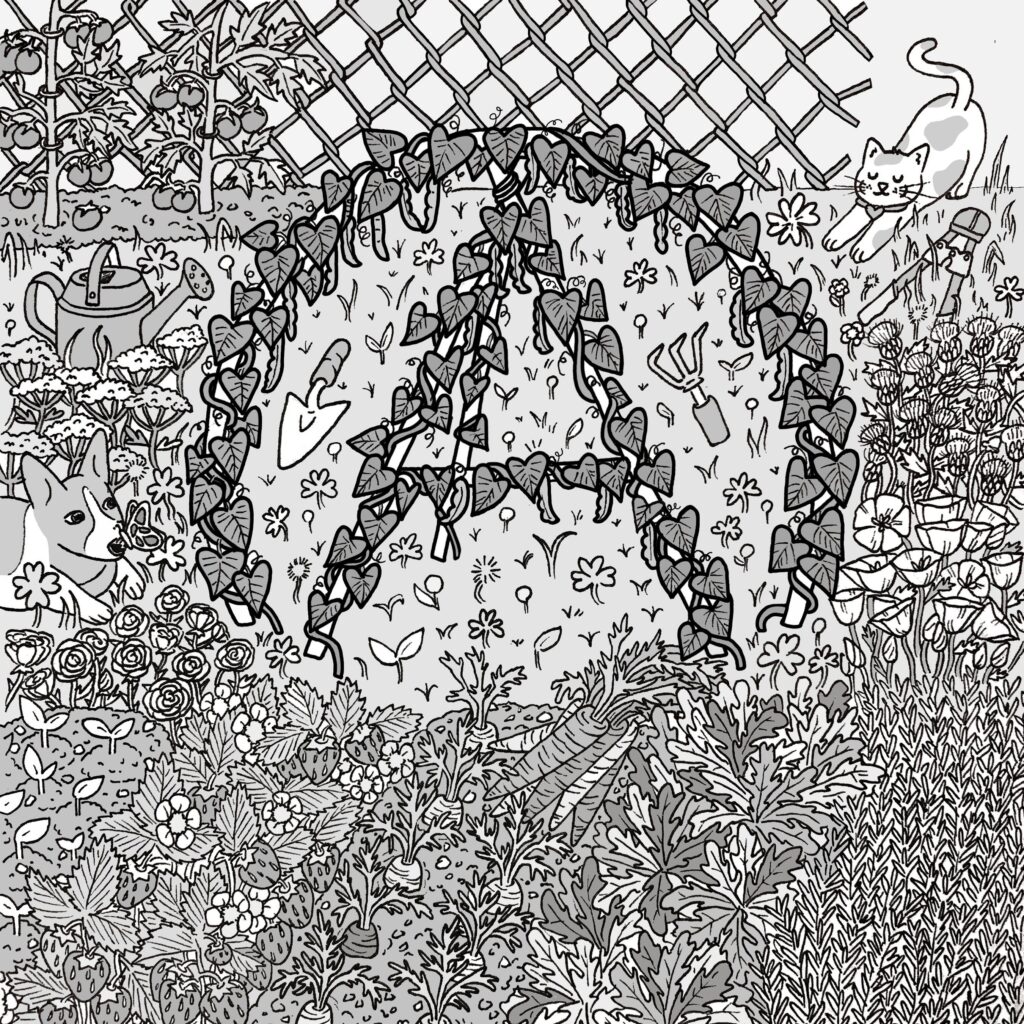
We humans are also social creatures. There is a strong impulse in anarchism that recognizes that we all need each other and we always have; that humans have always cooperated to aid each other, and that cooperation includes each of us. I am not somehow outside of that cooperation. It always pains me when anarchists or radicals say they are acting “for the community,” but we are actually a part of that community ourselves. We can speak for our own needs and desires within that community, or more precisely, communities, and listen to others doing the same. Our spaces, our communities, are so much stronger and far more imaginative—not to mention, collectively caring—when we’re all able to talk openly about what we need and desire, and from there, can solve problems together. That invariably means coming up with multiple answers to our questions, and likely even rethinking our questions because of our varied answers, to arrive, again and again, at better ways to thrive together.
Because anarchists think in terms of wide-ranging social transformation, we sometimes believe we are not impacted by the current social order. That we could somehow step out of patriarchy, heteronormativity, and the logic of capitalism and fascism. I think developmentally about the world—or what some call dialectically. We’re not outside the present; we’re socialized, impacted, and influenced by it. The more we self-recognize how we are socialized in this world and fight against that, the more we can actually live up to our aspirations. A developmental logic is important for that promise. Seeds are an overused metaphor, but the new world will only come out of something that is already here. What are the things within and around us that we can expand on to become more liberatory, and what are the things within and around us that work at cross-purposes with liberation? What things inside and around us have the capacity to unfold toward freedom?
In Try Anarchism for Life, I used a lot of language that points beyond just us humans as a way to encourage us to think of ourselves developing and growing within an ecosystem, which also hopefully unfolds toward life and sociality, collectivity and mutuality.
I’ve often heard this critique from Marxists that anarchists are hopelessly utopian, but there’s a sense in which the opposite is true. If you are sitting around waiting for the perfect conditions for a revolution that will absolve us of all previous problems, that seems utopian. But if you are instead engaging in revolution now, daily, and feeling the benefits of that change and measuring the success of those changes through your subjectivity (I am happier, I have more community, etc.), that’s more measurable and conceivable. It seems about bringing the long-term revolutionary project into the immediacy, and then bringing those changes to a level of capacity that it tips into an entirely new kind of world.
Anarchism is a deeply nonhierarchical way of thinking: We all deserve a new, egalitarian world. I don’t believe that I am somehow above other people or more deserving; that I should help others transform their lives, but that I don’t need that help myself. One of the beauties of anarchism is that people together aid each other and get free; we steal back the qualitative differences that make life livable when we engage in anarchistic practices. This book tries to underscore that.
I spent a lot of time honing down the pieces into compact yet poetic prose, focusing heavily on word choice and rhythm—the sound of the pieces. All in an effort to bring out the musical magic to life, to get people to feel the difference. Time and time again, I’ve been in spaces that are anarchistic and people repeatedly say they feel life, they feel the difference, they want the whole world to emulate those moments and not have to “go back.” These feelings are why people fight for social transformation away from this dreary, brutal society. I don’t think anarchism is offering happiness so much as really qualitative senses of what it feels like to be in the kinds of social and communal space we want and deserve through the whole of what life throws at us. Even when life is hard, we can get through sorrow, trauma, and grief in ways that feel measurably better when we do it in anarchistic ways. We can feel held, cared for, seen, and able to express the fullness of our sorrows as well as joys.
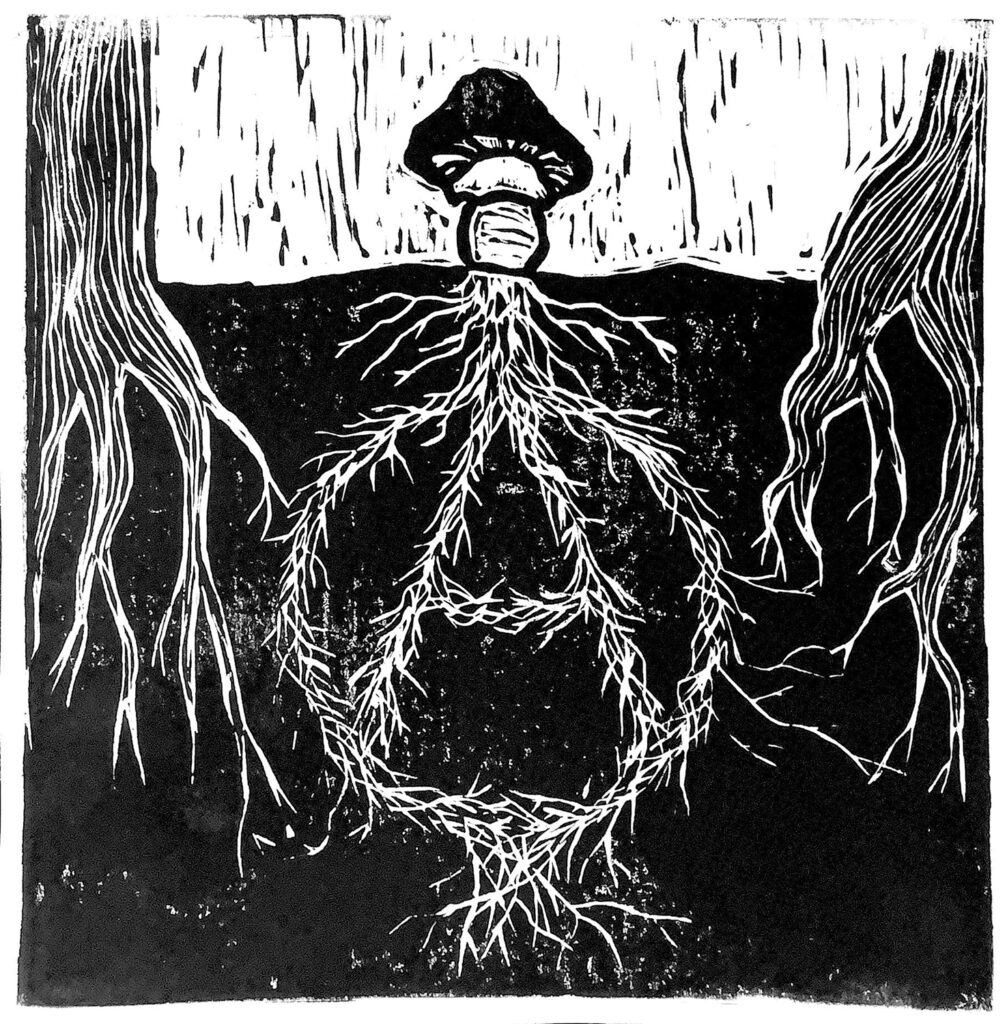
There is something deeply nonhierarchical in these practices, and it includes all of us in continually experimenting with and capturing those feelings about what it is like to live inside our dreams, here and now. It makes people want to do that work even more—the work of everyday anarchism. It’s why in moments like the pandemic, or human-created catastrophes like fascists attacking trans and queer folks, or when there are disastrous fires or floods, people feel a heightened quality because people start acting anarchistically to take care of each other. When the state and police aren’t helping us (or rather, it becomes clear to nearly everyone that they never are), people begin to realize that when we turn to each other, we are already able to do this work of care—reciprocal circles of care. And even in the worst conditions, we experience a joy in acting anarchistically that we rarely, if ever, experience under political forms of social organization, because we’re all in it together, for and with each other.
I know you best as a real collaborative writer. You have done multiple anthologies with AK Press as well as collaborations with artists. This is how Try Anarchism for Life emerged, as a collaboration with multiple artists who were reimagining how to illustrate the famous “Circle A” that signifies anarchism as an idea, working through Instagram as a digital intermediary. Why do you choose to do your work in such deep collaboration with others?
I didn’t set out to do books collaboratively. My work simply emerged this way as a sort of anarchist or anarcha-feminist practice. The idea that one person writes a book and all the ideas came out of them alone is a myth anyway. Again, we’re social creatures. Even if you have your name on a book as an author, those ideas came out of conversations or reading other people’s writing or learning from others and all of your life experiences. There’s something about the collaborative process that I really love because it forefronts those influences. It makes them visible.
But it’s also why I’m so committed to forms of self-governance, direct democracy, and self-organization. Even if sometimes it is actually much harder, it is more generative when more people try to create something together. People push each other to see things that they couldn’t otherwise see on their own. Collaborative projects challenge one to think differently. They make our creations feel richer, more beautiful, and more expressive, and offer different vantage points that one author couldn’t see on their own. In this case, the collaboration is the twenty-six drawings of Circle As that each try to embody some beautiful element of anarchism. I can’t draw well, so I simply could not have done it myself. But even if I’d had one artist draw all the Circle As, it wouldn’t have resulted in the depth and breadth of anarchism’s beauty that one reads on the pages of Try Anarchism for Life, because of twenty-six artists, two graphic designers, and me—all literally illustrating that anarchism manifests in countless differentiated and beautiful ways.
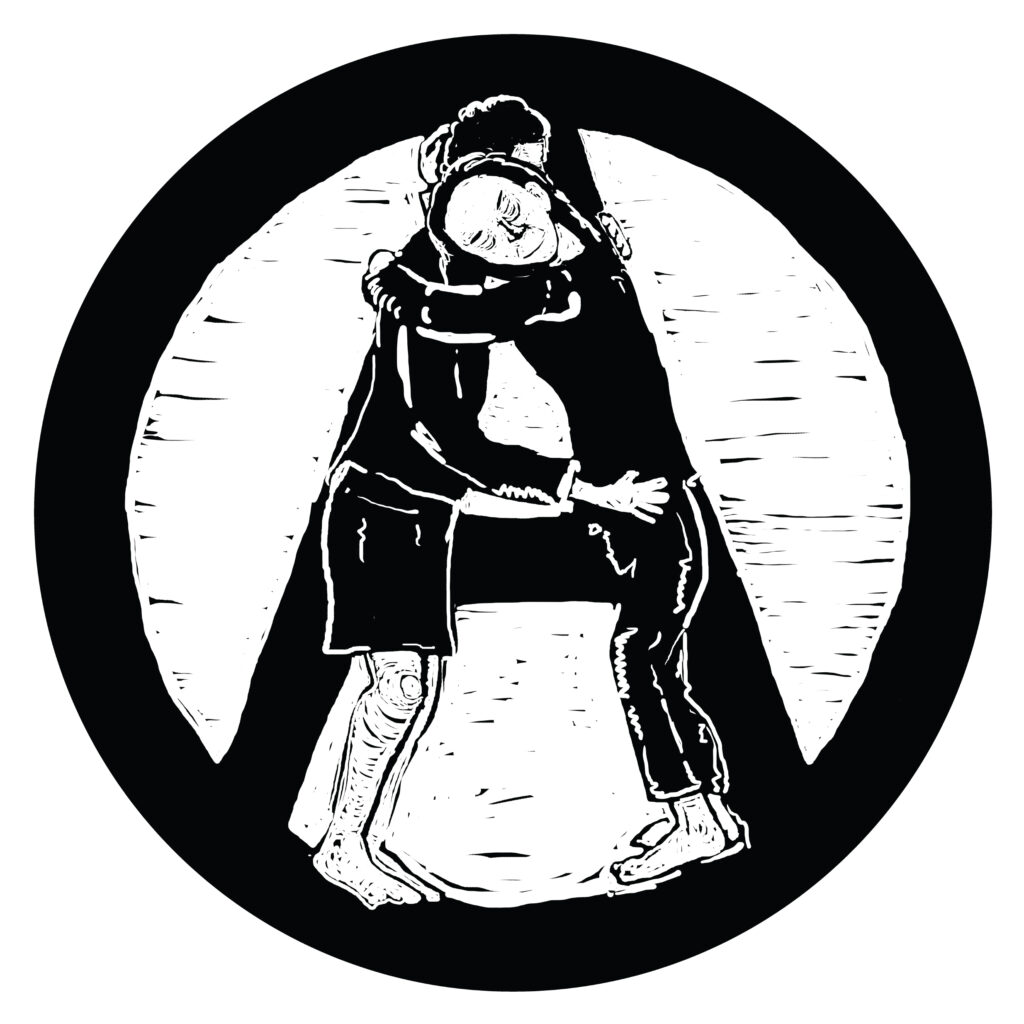
So I like collaboration because it highlights that people have different beautiful skills, and we can bring them together to form something uniquely beautiful and new. Yet I also adore the process, the social relations, of having conversations with other people; the joy of meeting and connecting with people through a project, and lovingly pushing each other to stretch ourselves, whether artistically or emotionally; the gratitude that comes when we engage in a labor of love together and see how our various pieces, alongside the whole, take on life way beyond the book itself. I’ve been slowly trying to curate an anthology looking closely at real-life anarcha-feminist practices these days, and intriguingly, none of the writers involved in that book want their voices to be singular. They recognize that part of organizing as if social relations matter, including as part of an anarchist book project, is about deeply listening to, valuing, and empowering each other.
This book had to be a collaboration because I can’t draw. I talk about this in the book’s introduction, about how I often write little picture-prose posts on Instagram. I hated that format in the beginning, but now I really like writing these little stories. I like tight, fragmented writing, trying to say a lot in an accessible way, writing short pieces that people can think through on their own and draw out their own expansive ideas from the nuggets I try to offer. For this book, I started playfully observing on Instagram, Why don’t we put into words, images, and practices the prefigurative point of anarchism? People began sending me pictures of Circle As they’d made or seen or newly drawn. They were so lovely, and people also sent over notes thanking me for the encouragement to get more involved in their artistic skills or think about what they think is beautiful in anarchism.
Collaboration pushes us to think and act differently. One example is that a lot of the artists whose work is in the book said they hadn’t thought of doing that work before: creating Circle As that reflect the beauty of anarchism. Instead, they only approached anarchist imagery as depicting how we destroy systems of oppression, not necessarily building what we wanted life to be. Now, so many of the images used in the book, or created because of my “call” for Circle As but that I couldn’t squeeze into the project, are out in the world, circulating freely as stickers or T-shirts or graffiti. The collaboration really jumped off and beyond the pages!
Collaboration is really intimate too. The back and forth, having conversations and critiquing each other’s work, and being grateful for each other. It involves forming or deepening friendships and connections. I’ve met so many people through collaborative book projects that I never would have met before, and that in turn has resulted in, say, forms of solidarity or mutual aid, or supportively being there for each other through tough moments, because a lot of people are going through really hard stuff in this awful time period. So it embodies the kinds of social relationships that anarchism gestures toward as inseparable from social transformation. I want to collaborate on social relations of care and mutual creations, and that isn’t just about a book, but it includes collaborative book projects.
Collaboration in books creates a “dialogue” between the various voices/pieces, and dialogue seems to be a crucial part of what allows us to “decide for ourselves”—and thus self-manage, self-organize, and self-govern. One reason I do books, among others, is because there’s something I want to intervene in or “argue.” In the case of Try Anarchism for Life, I didn’t see it as an introductory book; I wanted to challenge anarchists to look to their own lives and practices, both individual and collective, and see how we’re already “living anarchism,” and do better at explaining and “illustrating” that to others. So I always have core “arguments” that I’m trying to get across in books. I adore curating a dialogue within them, between words and, in this case, images, to show that there are numerous and varied ways to dig into that argument. And with Try Anarchism for Life, if I’d only used one artist, it would have flattened out that dialogue.
Collaboration, too, is about mutual aid and solidarity for me, or maybe collective care is a better way to put it. Or perhaps even embracing trust. Not quite sure of the language here. But Try Anarchism for Life’s collaboration with a small press, for instance, meant I could support Strangers in a Tangled Wilderness via kicking back any profits to the collective, and doing lots of outreach for the book and also this small press via my networks, and in turn, the collective aided me by giving me artistic freedom (such as agreeing to use the designer and artist I wanted for the cover) and offering me discounted copies, since I like getting books into the world via gifting or sliding-scale offers. Plus we had each other’s backs through the whole process. And we put our trust in each other for what was an experiment on both ends: me, with an experimental format, and Strangers with the experiment of doing a book for the first time as a newly formed collective.

Lastly, beyond the other reasons we chatted about, in a “book publishing industry” context, and world where doing a book (or several) can alas give one a certain “fame” or “social capital,” collaboration is a way to use whatever space one is given when doing a book to create space for mentoring and uplifting words/art/voices that don’t usually get read/seen/heard. Anarcha-feminist collaboration tries to contest the power dynamics of the book publishing industry by prefiguring other ways of doing books. That’s especially true because the book publishing industry, even within radical publishing circles, still too often is made up of cis-male (often academic) voices. So collaboration for me is a way to create space to empower new writers/artists, or “older” ones who don’t get the attention they deserve, including because of gender, race, class, ableism, etc. I adore creating self-organized, magical-dreamy, messy-beautiful spaces of all kinds in which everyone feels empowered and “in it together,” and collaborative book projects are just one more type of those spaces, or at least can be.
Within it, I can work with writers to strengthen their craft or voice, or help bring out what they want to say, and make them feel they have something to say (which they do). In the case of Try Anarchism for Life, it really struck me how several of the artists were deeply touched and excited that it was the first time they’d had their work in a book! Or for some, maybe the first time they’ve even seen themselves as someone who could put their work out there in such ways.
For this book, you worked with the publishing collective Strangers in a Tangled Wilderness, which is a newly reformed project that also produces the podcast Live Like the World Is Dying and recently published the novella Escape from Incel Island by Margaret Killjoy. What was it like to work with this independent publishing collective?
It was an utterly beautiful experience. Way beyond anything I’ve experienced before. I don’t know if they’ve done a book before in their earlier history. But Strangers is a newly reconfigured and revived small press, and they want to work on various kinds of media, including books. I ran into one of the collective members randomly last summer, before I knew they were jump-starting Strangers again, and they said they’d wanted to talk to me; that if I was ever working on a project, to reach out. So months later, I did.
They are a collective that collaborates with each other, and all bring really different skills and passions, and they were also collaborating with me to do a book for the first time. So we were all learning and sharing and collaborating together. So it was a true pleasure. It felt so lovely to grow together and figure out how to do everything together. But also, what I really appreciate about this collaboration was it felt truly collaborative. They were really supportive of me and the book; they were transparent about everything; they assigned different collective members as point people to communicate with me on the distinct tasks related to the book, and regularly were in communication. I felt that Strangers embodied anarcha-feminist and queer ethics in how they treated me and treated each other. The few times we had differences about something, when we were trying to grapple with different dilemmas related to the book—mostly because of the constraints of the capitalist book publishing industry—we figured everything out together, respectfully and through open dialogue.
The process also felt more intimate and accessible, but that could just be because of them—who they are as people, alongside how they’ve chosen to self-organize their collective. The main collective member shepherding my book was in touch every week with me, making me feel held and supported from beginning to end, but I felt like we saw each other as full human beings too. I am excited about what Strangers is increasingly putting out, beyond my book, and the small press experience has been a really good one. Considering the challenges for small presses, this collective has such enthusiasm and excitement about what they are doing. And such creativity and passion. I’m sure small presses struggle, because it’s really intense to survive in the capitalist book industry, yet they never let that struggle spill out onto me, nor deter them—at least from my vantage point—from maintaining their ethics.
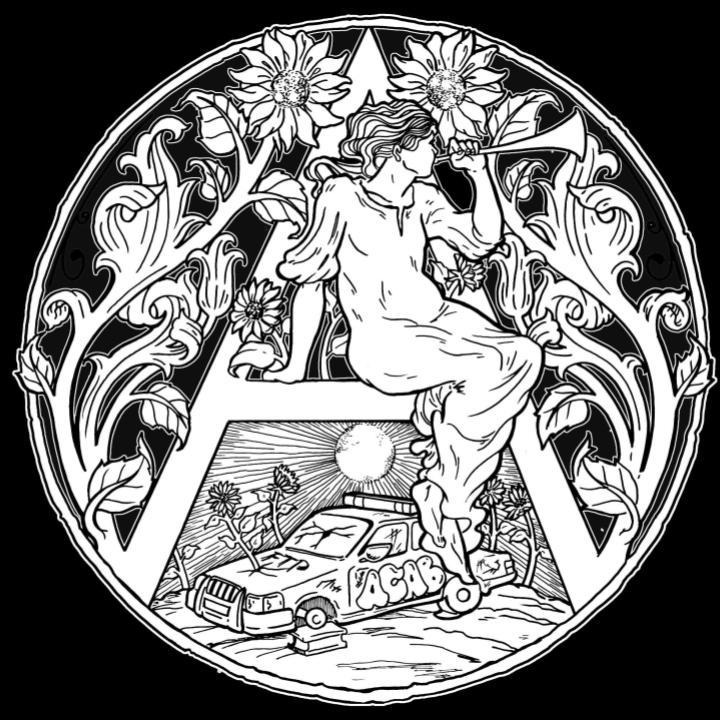
Shane Burley is a writer and filmmaker based in Portland, Oregon. He is the author of Why We Fight: Essays on Fascism, Resistance, and Surviving the Apocalypse (AK Press, 2021) and Fascism Today: What It Is and How to End It (AK Press, 2017), and the editor of No Pasaran: Antifascist Dispatches from a World in Crisis (AK Press, 2022). His work has been featured in places such as NBC News, Al Jazeera, Jewish Currents, The Daily Beast, The Independent, The Baffler, Bandcamp Daily, and the Oregon Historical Quarterly. He is currently co-authoring a book on antisemitism and co-editing an anthology of solarpunk speculative fiction. You can follow him on Twitter @shane_burley1 and on Instagram @shaneburley.
This post may contain affiliate links.







